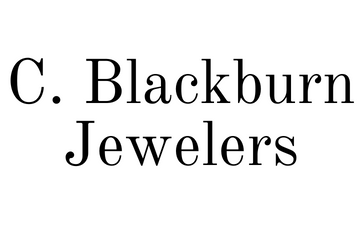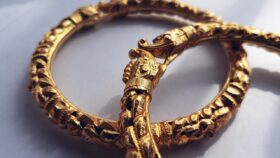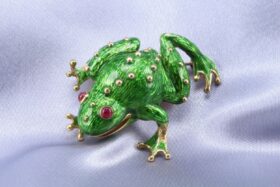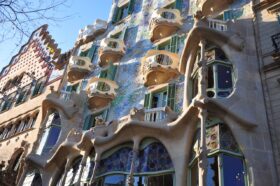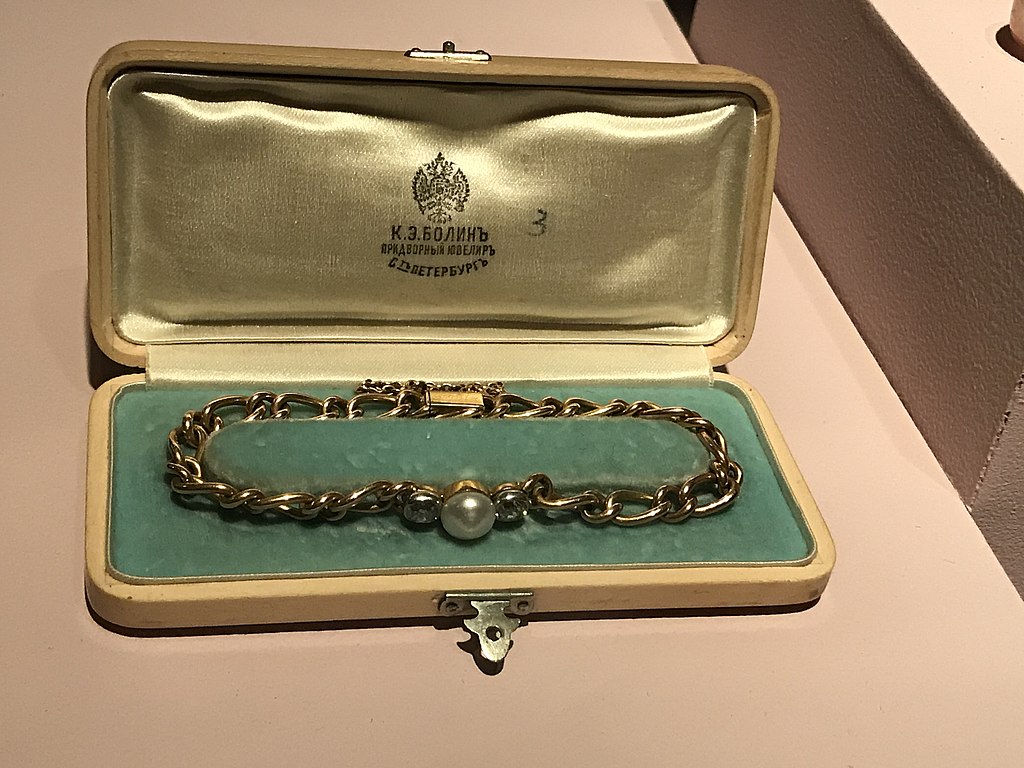
15 Jul Sell Bracelets to a San Diego Jewelry Buyer
C. Blackburn Jewelers in La Jolla is one of the best places in San Diego to sell bracelets for cash, in particular antique bracelets and diamond bracelets. We are highly knowledgeable in gold, platinum, and gemstone bracelets made during the important historical periods for fine jewelry. Our owner Carl Blackburn has decades of hands-on experience buying and selling estate jewelry and bracelets: from Georgian, Victorian, and Edwardian bracelets to Art Deco and diamond tennis bracelets from Tiffany, Cartier, and Van Cleef & Arpels.
Visit our contact page to get started selling your bracelet by arranging a free consultation and market appraisal. Continue reading to learn more about the history of bracelets and the types of antique and vintage bracelets that we buy from our San Diego customers.

The Early History of Bracelets
Bracelets first emerged in prehistoric times when early humans crafted them using materials like bones, shells, and stones. These simple yet meaningful adornments likely served both aesthetic and symbolic purposes, reflecting humanity’s innate desire for personal expression.
In ancient Egypt, bracelets held significant cultural and religious importance. Crafted from materials such as gold, silver, and gemstones, they adorned the wrists of both men and women. These bracelets featured intricate designs, often incorporating symbols like the scarab beetle or religious motifs, reflecting the deep spiritual beliefs of the ancient Egyptians. Meanwhile in ancient Rome, bracelets showcased engravings and medallions depicting mythological figures.
Mesopotamia and Ancient Persia witnessed the creation of bracelets from a variety of materials, including gold, silver, and precious stones. These bracelets symbolized wealth and status, featuring elaborate designs with animal motifs. The craftsmanship of these ancient civilizations showcased their sophistication and appreciation for intricate jewelry.
During the Byzantine Empire, bracelets became even more ornamental and significant. Made from gold, silver, and adorned with pearls, gemstones, and enamel, Byzantine bracelets featured elaborate patterns and religious symbols. These precious accessories served as symbols of faith and social status, reflecting the opulence and religiosity of the empire.
In medieval Europe, bracelets remained highly sought after by the upper classes. Crafted from precious metals like gold and silver, they were often embellished with gemstones and intricate engravings. These bracelets represented social rank and membership within noble households, emphasizing the hierarchical structure of medieval European society.
The Renaissance era marked a revival of interest in classical art and culture, influencing the design of bracelets. Renaissance bracelets were crafted from gold, silver, and precious stones, drawing inspiration from ancient Greek and Roman aesthetics. They featured intricate chains, cameos, and engravings, allowing the nobility and elite to express their refined taste and social status through their jewelry.
These bracelets from early history are usually sold to museums, and not something that we purchase at C. Blackburn Jewelers of La Jolla. We buy bracelets starting from around the Georgian period (1700s), so let’s learn more about these bracelets.
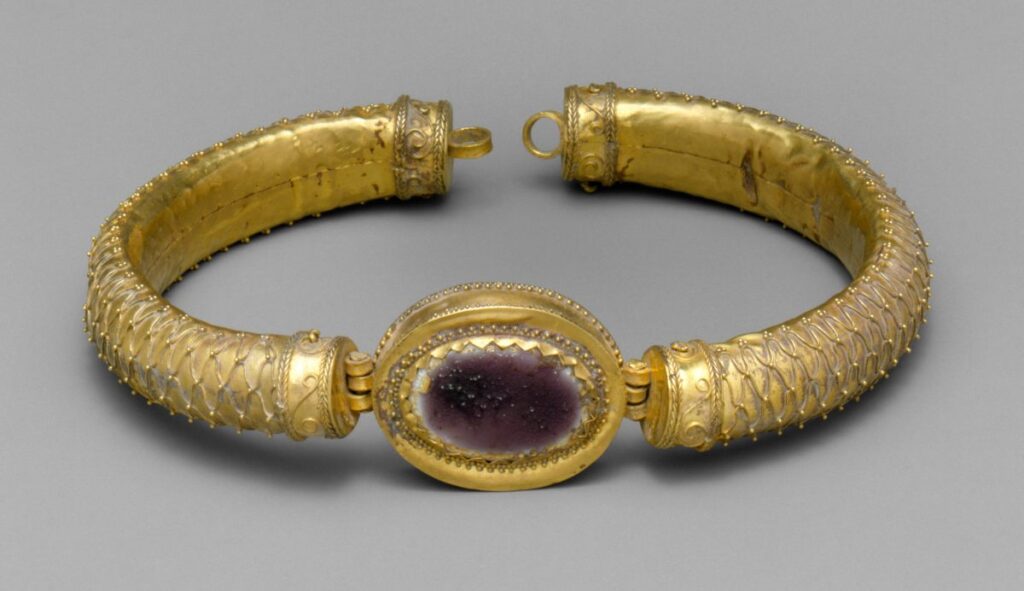
Georgian & Victorian Bracelets
The Georgian and Victorian periods, spanning from the 18th to the 19th century, witnessed significant developments in bracelet designs in comparison to the earlier periods we discussed above. Here is a quick overview of the styles, designs, and innovations of these two antique jewelry making periods.
Georgian Period (1714-1837)
Materials: Bracelets were typically crafted from precious metals like gold and silver. Yellow gold was particularly popular, often adorned with gemstones such as diamonds, pearls, rubies, emeralds, and sapphires. Intricate filigree work and delicate engravings were also common.
Styles: Georgian bracelets encompassed various styles. The neoclassical style, inspired by ancient Greek and Roman art, featured motifs such as cameos, intaglios, and classical figures. Bracelets were often embellished with intricate floral patterns, scrolls, and delicate meshwork. Chased goldwork, where the metal was hammered to create textured designs, was also prevalent.
Significant Designs: Bracelets during the Georgian period often conveyed sentimental or symbolic meanings. For example, mourning bracelets were popular, featuring black enamel and hairwork from a deceased loved one. Lover’s eye bracelets, which contained a miniature painting of an eye, symbolized secret affection. Bracelets with hidden compartments for storing a lock of hair or a small portrait were also cherished.
Victorian Period (1837-1901)
Materials: Bracelets were crafted from various materials, including gold, silver, base metals, and later in the era, platinum. Gemstones such as diamonds, pearls, amethysts, garnets, and coral were widely used. Enameling, particularly in vibrant colors, became increasingly popular.
Styles: Victorian bracelets encompassed several distinct styles. The early Victorian era favored delicate and intricate designs, often incorporating natural motifs like flowers, leaves, and birds. As the era progressed, bracelet designs became more elaborate, with the rise of the Grand and Naturalistic styles. These styles featured bold, sculptural designs inspired by nature, such as serpents, snakes, and insects.
Sentimental and Symbolic Designs: Sentimental and symbolic meanings remained significant during the Victorian period. Lockets, with compartments for keepsakes or portraits, were incorporated into bracelets. Charm bracelets, adorned with various charms representing personal beliefs, achievements, or memories, gained popularity. Additionally, bracelets with engravings of loved ones’ initials or symbolic motifs like hearts and crosses were cherished.
Mourning Jewelry: The Victorian era was known for its elaborate mourning customs. Mourning bracelets made from jet, black enamel, or onyx were common. These bracelets often featured somber designs, including skulls, urns, and draped figures, serving as reminders of the deceased.
If you would like to sell a Georgian bracelet or sell a Victorian bracelet in San Diego, please visit C. Blackburn Jeweler’s contact page to tell us about your item and set up a free consultation at our La Jolla jewelry store.
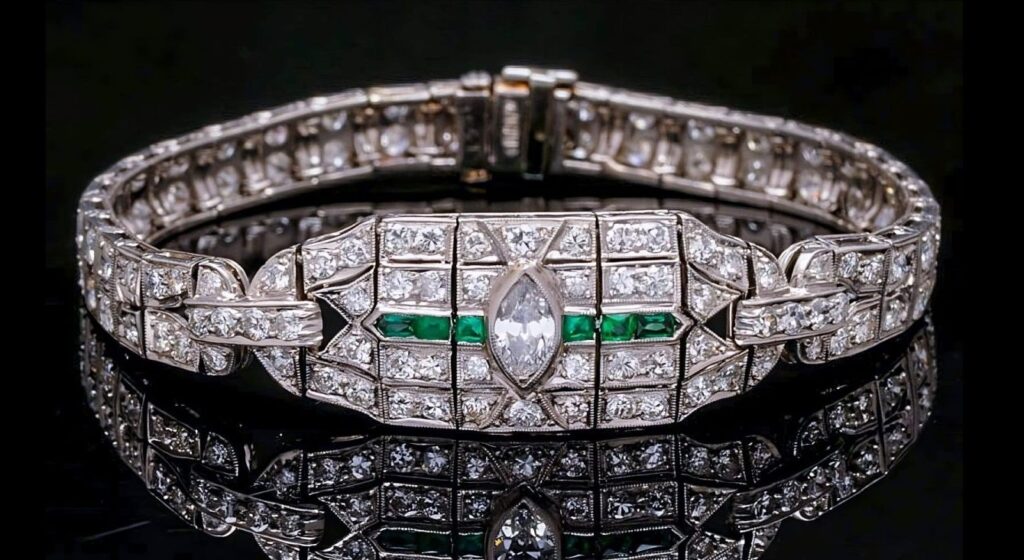
Edwardian and Art Deco Bracelets
The Edwardian and Art Deco periods, which followed the Victorian era, brought forth distinct styles and design influences that greatly influenced the world of bracelets. From the refined elegance of the Edwardian period to the bold and geometric designs of the Art Deco movement, bracelets of this time exhibited unique characteristics and reflected the changing societal and artistic trends.
Edwardian Period (1901-1914)
Materials: Bracelets were predominantly crafted from platinum, which allowed for intricate and intricate designs. Diamonds were the most popular gemstones, often paired with other precious stones such as pearls, emeralds, and sapphires. Light-colored gemstones were favored to create a delicate and ethereal look.
Styles: The Edwardian era embraced delicate and lacy designs, drawing inspiration from motifs such as garlands, ribbons, bows, and lacework. Filigree and milgrain details, characterized by tiny beaded edges, were commonly used to enhance the intricate designs. Bracelets featured graceful curves and flowing lines, evoking a sense of femininity and elegance.
Flexible Bracelets: The introduction of platinum as a favored material during the Edwardian period led to the creation of flexible bracelets. These bracelets, often called “line bracelets” or “tennis bracelets,” were composed of a continuous line of gemstones, allowing them to gracefully drape around the wrist.
Importance of Pearls: Pearls were highly prized during the Edwardian period, and they were often incorporated into bracelets. Pearl strands, either alone or in combination with diamonds and other gemstones, were popular choices. Bracelets adorned with pearl and diamond clusters or featuring delicate pearl accents were particularly favored.
Art Deco Period (1920s-1930s)
Materials: Platinum and white gold continued to dominate, providing a sleek backdrop for the bold designs. Gemstones such as diamonds, emeralds, rubies, and sapphires were used to create striking contrasts. Precious and semi-precious gemstones were often cut into geometric shapes, including baguettes and emerald cuts.
Geometric and Symmetrical Designs: Art Deco bracelets were defined by geometric shapes and symmetrical patterns. Rectangles, triangles, circles, and hexagons were common elements in bracelet designs. The clean lines and bold contrasts showcased the influence of the machine age and modern aesthetics.
Inlaid Enamel and Gemstone Patterns: Art Deco bracelets often featured vibrant inlaid enamel work, adding bold splashes of color. Intricate patterns, including geometric motifs, sunbursts, and chevron designs, were created using contrasting enamel colors. Gemstones were also meticulously set in geometric patterns, enhancing the overall visual impact.
Influence of Egyptian and Oriental Art: The discovery of King Tutankhamun’s tomb in 1922 sparked a fascination with Egyptian art and motifs. Art Deco bracelets incorporated Egyptian-inspired symbols, such as scarabs, hieroglyphics, and stylized lotus flowers. Oriental influences, particularly from Japanese and Chinese art, were also seen in the use of motifs like fans and dragons.
Bracelet-Watch Combinations: Wristwatches became increasingly popular during the Art Deco period, and bracelet-watch combinations emerged as a stylish accessory. These bracelets incorporated a timepiece as a central element, often surrounded by intricate geometric designs or gemstone accents.

Sell a Bracelet to Our San Diego Jewelry Buyers
If you would like to sell an antique bracelet or diamond bracelet, please contact C. Blackburn Jewelers of La Jolla today. Get a preliminary cash quote by calling 858-251-3006 or send us a message in the contact form below. Please provide as many details as possible about your bracelet. To send photos and a text message, please use the following number:
Text Message & Photos:
619-723-8589
When you sell bracelets to our San Diego jewelry buyers there is never any pressure sell on the day of your appointment. We will gladly share with you all the information we know about your bracelet, so that you can make an informed selling decision. We also buy vintage and antique necklaces. Learn more at: Sell a Necklace.
